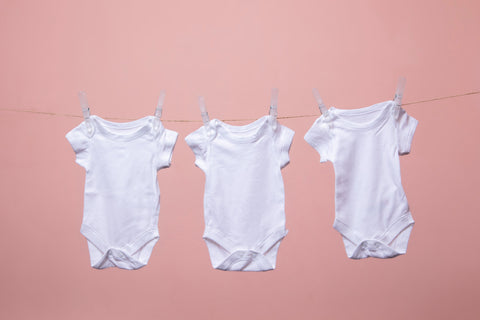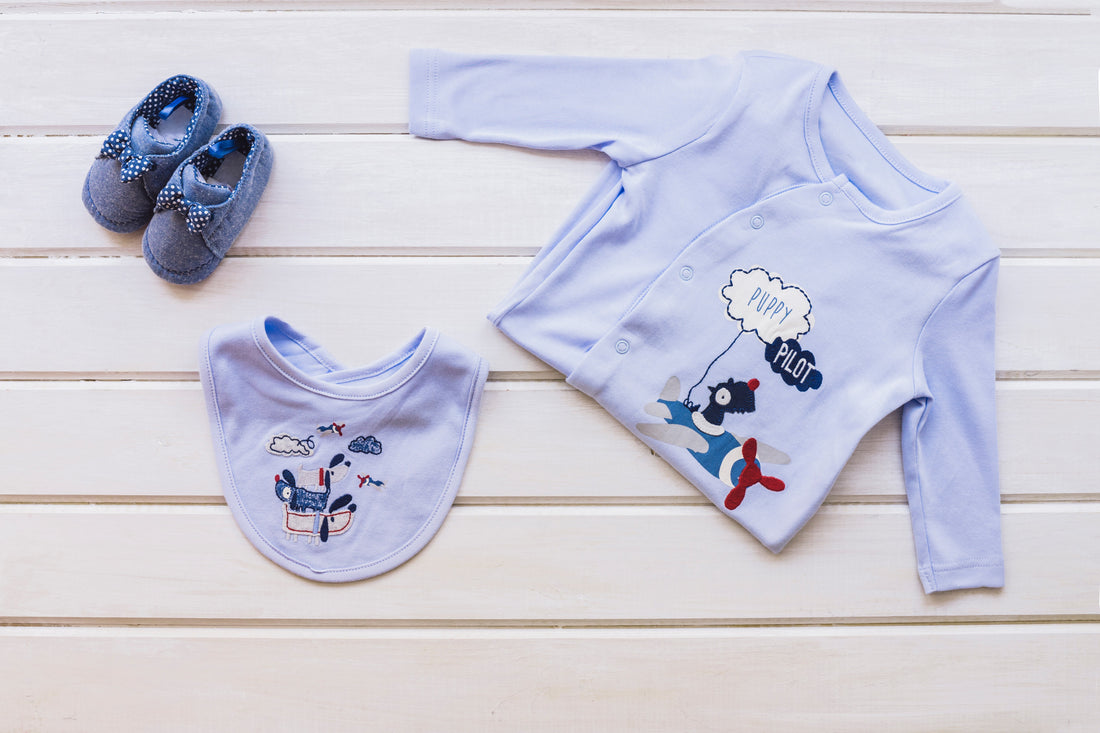Onesies are a baby's wardrobe staple for baby clothes. They are comfortable, easy to put on and take off, cute, and the perfect accessory for any occasion. But when do you know it’s time to move your baby out of onesies?
In this blog post, we will break down when it is time to transition your baby out of onesies and into more grown-up clothing and why it is important.
A Brief History Of The Onesie
The onesie first originated in Japan during the late 1920s as an adult-sized jumpsuit made from a lightweight material such as cotton or silk. It wasn't until the early 2000s that the onesie became popular in Western culture as a garment for babies, toddlers, and young kids, due to its comfort, ease of wear, and range of colors and designs.
In recent years, the fashion industry has started to embrace the classic look with adult-sized versions becoming increasingly popular. When the baby begins to transition out of the onesie, it is important to consider age, size, and comfort.

What Makes Onesies So Comfortable?
Most people would agree that the biggest draw of wearing a onesie is its comfort factor. As mentioned above, traditional onesies are made from soft materials such as cotton or silk which make them perfect for lounging around at home or even sleeping in on cold winter nights.
Many modern-day versions also come with added features like built-in pockets or hoods which can provide extra warmth during colder weather months. Additionally, many adult-sized versions also feature zippers down either side which allow wearers to easily slip them on or off without too much effort.
Read More: Where To Put A Baby Monitor?
When Do Babies Stop Wearing Onesies?
Babies can usually start wearing onesies from the day they are born until they reach around 18-24 months of age. After that, it’s time to transition them into different types of clothing such as two or three-piece sets or jumpsuits.
At this stage, babies may also be able to wear more fitted styles such as leggings and t-shirts which provide more freedom of movement than an all-in-one onesie. It's important to note that sizes can vary dramatically between brands, so make sure you double-check the sizing before making a purchase.
Types Of Onesies

Footed Onesie
The most traditional type of onesie is the footed onesie. This type of garment covers the entire body, including the feet, and usually has a zipper or snaps down the front. They are designed to be loose-fitting so that your child can move freely. Footed onesies come in many different styles and colors, making it easy to find one that matches your kid’s personality.
Short Sleeve Onesie
Short sleeve onesies are perfect for warmer months. These garments have short sleeves and usually come down to around mid-thigh length, making them comfortable and airy while still providing plenty of coverage. Short sleeve onesies are often made with lighter fabrics like cotton or bamboo to keep your little one cool during hot summer days.
Long Sleeve Onesie
The opposite of a short sleeve onesie is a long sleeve one – these garments feature long sleeves that can provide extra warmth when needed. Long-sleeve onesies typically come down past the knees, providing full coverage from top to bottom without being overly bulky or uncomfortable for kids to wear. These can be great for layering in colder months or wearing alone on mild days.
Read More: Do Babies Sleep More When Teething
Benefits Of Babies Onesie
Let's take a look at some of the benefits of investing in baby onesies.
Comfortable And Breathable Material
Baby onesies are made from soft cotton fabrics that keep babies comfortable while also allowing their skin to breathe. They’re lightweight, so they don’t weigh down on your baby - making them ideal for long days out or long nights of baby sleep patterns! Plus, they come in all sorts of styles and colors so you can find something perfect for any occasion or outfit.
Convenient Snap-on Design
One of the best things about baby onesies is that they feature a convenient snap-on design which makes it easy to put on and take off your baby’s clothing. This saves time when changing diapers or dressing up for a special occasion.
Plus, if you have a wriggly infant who doesn’t like to stay still while getting dressed, having the snaps allows you to quickly get their clothes on without too much effort.
Easy Care Instructions
Another great thing about baby onesies is that they require minimal care instructions - just machine wash cold with like colors and tumble dry low! This makes them super easy to clean which helps save time when caring for your little one.
Plus, because they're so lightweight and breathable, there's no need to worry about them shrinking or fading after each wash - they'll last through plenty of wear.

Easy Care Instructions For Maintaining Baby Onesies
Separating The Laundry
The first step when washing your baby’s onesies is to separate the whites from the colors. This will help prevent any accidental color bleeding that could damage the fabric. Additionally, if you have any particularly delicate items like silk or lace, you'll want to make sure they're washed separately as well.
Temperature Matters
When it comes to laundry, the temperature matters! If you’re washing a load of cotton onesies, use warm water (not hot!) on a gentle cycle with mild detergent.
For more delicate fabrics like silk or lace, use cold water instead and select a gentle cycle with a mild detergent. And don't forget – always read the label before washing! It's important to follow the manufacturer’s instructions for the best results.
Drying Time
Once your baby’s onesies have been washed and rinsed, it's time for drying! Cotton items should go in the dryer on low heat or air dry outside. Delicate fabrics should be laid flat on a towel or hung up outside in indirect sunlight.
Avoid direct sunlight when drying delicate fabrics as it can cause fading and damage over time. If an item still feels damp after being dried, take it out of the dryer and lay it flat until completely dry.
Read More: When Do Babies Start Dancing?
Conclusion
Onesies are a great way to keep your baby comfortable, warm, and stylish. Just remember to follow the care instructions when washing and drying your baby’s onesie to ensure it lasts as long as possible.
And don’t forget – typically babies wear onesies till 18-24 months of age so be sure to transition them into different types of clothing at this stage. So, potty-training panties and regular clothing can wait until then. Walking babies, toddlers, and young kids in onesies is a popular trend that’s sure to stay around for years to come.

